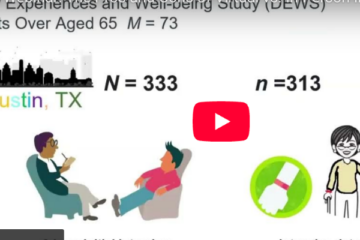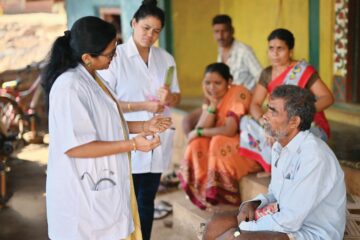
Changing Demographics Reshape Rural America
(April 2017) Trends shaping rural life in America include unprecedented population declines, a growing Hispanic population, a disproportionate share of military veterans, and a sharp increase in “deaths of despair”—related to suicide, alcohol abuse, and drug overdose—among rural residents with low education levels.
At “Small Towns/Big Changes: The Shifting Demographics of Rural America,” a briefing for members of Congress and their staff sponsored by the Population Association of America, scholars explored the implications of current demographic trends and recent socioeconomic change for the nation’s rural areas.
The presenters at the April 3, 2017 event included:
Dr. Robert A. Moffitt, Johns Hopkins University, moderator
Panelists:
Dr. Daniel Lichter, Cornell University (slides, PDF)
Dr. Jennifer Van Hook, Pennsylvania State University (slides, PDF)
Dr. Meredith A. Kleykamp, University of Maryland (slides, PDF)
Dr. Wesley James, University of Memphis (slides, PDF)
Daniel Lichter explored the three “D’s” reshaping U.S. nonmetropolitan counties in the United States—depopulation, deaths, and diversity. Beginning around 2010, U.S. rural counties as a whole began experiencing an overall population loss for the first time; previously, out-migration was offset by births. Now about one-third of U.S. counties have more deaths than births, reflecting both out-migration of young adults and older adults aging in place. Hispanics made up more than one-half of the people added to the U.S. rural population through both migration and births between 2000 and 2010.
These trends have implications for policy, he noted. Populations that have large shares of people who are old, poor, or minorities have different needs for medical care, legal assistance, and social services. However, rural areas characterized by chronic out-migration are unlikely to attract highly educated professionals to provide those services because these areas lack urban amenities, potential marriage partners, good schools, and high-quality health care.
Jennifer Van Hook emphasized that nine out of 10 rural areas are more diverse now than they were 20 years ago. She described how jobs in construction, manufacturing, agriculture, and meat packing have brought immigrants to new places in rural America in recent decades. Immigrants and the industries that have attracted them have helped revitalize dying towns such as Worthington, Minn., which lost population in the 1990s but now is 40 percent Hispanic and growing, she explained. Births to immigrants help fuel this growth. Long-term residents have received immigrants with a mixture of appreciation and apprehension. Social and economic integration takes time and is more likely to occur for the second generation, she suggested.
Meredith A. Kleykamp reported that U.S. military veterans are disproportionately represented among rural residents: Roughly 18 percent of the total U.S. population lives in rural areas compared with 24 percent of all veterans. Additionally, 36 percent of veterans who use the Veteran’s Administration (VA) for health care live in rural areas, and distances to VA facilities pose challenges. Lack of broadband internet in many rural areas limits the promise of telemedicine as a solution. She noted that veterans who have completed their military service could be an important resource for rural communities, bringing educational skills and leadership experiences. However, information is lacking on what leads rural-origin veterans to return to rural areas or settle elsewhere after they complete their military service.
Wesley James examined rural and urban death rates, which were the same between 1940 and 1985 but began inching apart after 1985. Urban mortality rates have been dropping faster than rural rates since 1985, resulting in a widening gap. The U.S. rural population currently experiences 100 more deaths per 100,000 people each year than the urban population. He reported that if rural death rates had equaled urban death rates between 1986 and 2012, there would have been 700,000 fewer deaths in the United States. For the first time in 20 years, life expectancy at birth in the United States declined slightly, according to data for 2014 and 2015 from the National Center for Health Statistics.
James focused on recent research on “deaths of despair” due to suicide, alcohol abuse, and drug overdoses—notably, the opioid epidemic—since 2000. These deaths are most prevalent in highly rural parts of the nation, including parts of Appalachia and the Southwest. “Accumulated disadvantage” related to low education levels, unemployment, poor mental and physical health, and isolation puts rural residents at higher risk of premature death. Adults with no more than a high school degree have suffered most: Deaths of despair among this group more than doubled since 2000. By contrast, rates for those with a four-year college degree remained constant during the period.
Co-sponsors of the event included the Population Reference Bureau, American Sociological Association, American Statistical Association, Association of Population Centers, Association of Public Data Users, Consortium of Social Science Associations, Council of Professional Associations on Federal Statistics, and the Rural Sociological Society.






